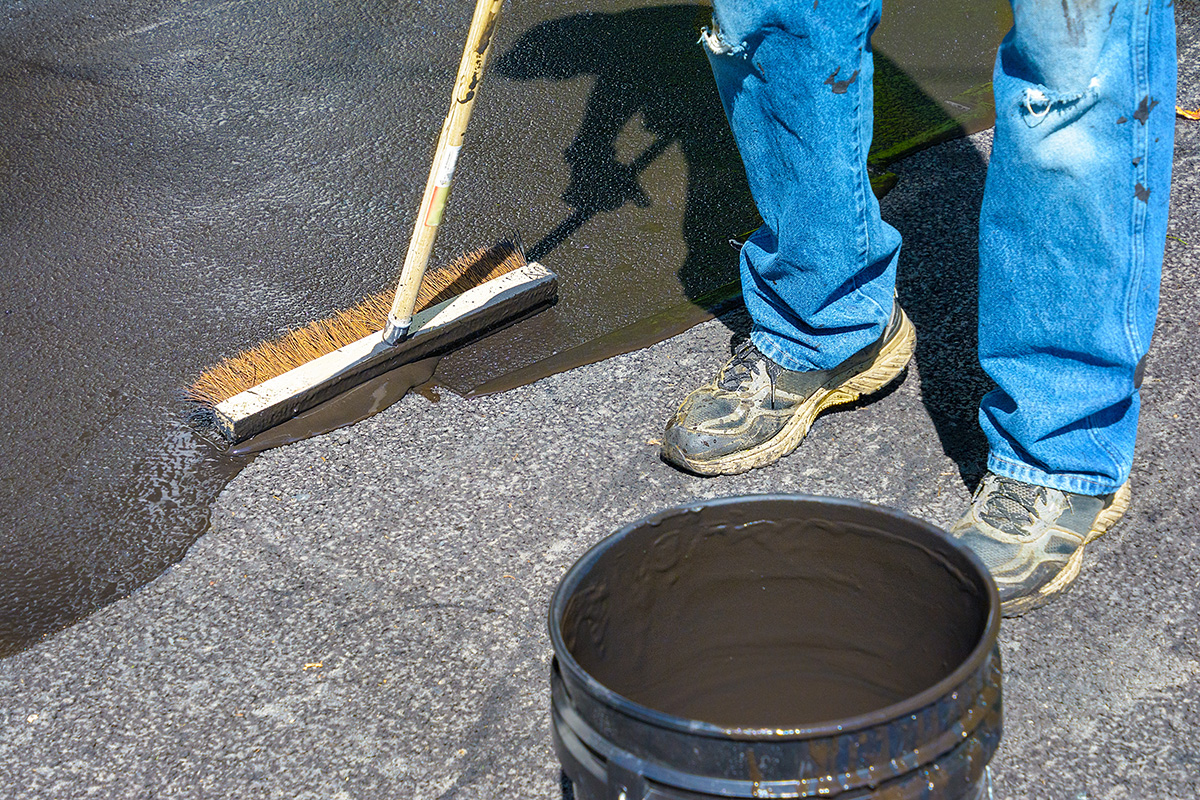Seal in High Quality: Expert Solutions for Asphalt Repair and Sealing
Seal in High Quality: Expert Solutions for Asphalt Repair and Sealing
Blog Article
Cold Mix Asphalt Vs. Hot Mix Asphalt: Which Is Right for You?

Structure Differences
Cold mix and warm mix asphalts vary substantially in their composition, with distinct characteristics that influence their performance and applications. Cold mix asphalt is generated by emulsifying the asphalt binder with water and an emulsifying agent prior to blending it with accumulation. This method enables for the asphalt to be workable at reduced temperature levels, making it perfect for short-term fixings and for use in cooler weather. Hot mix asphalt, on the other hand, is made at heats, usually in between 300-350 ° F, which assists to achieve better compaction and a much more sturdy end product. The warm mix asphalt production procedure includes warming the accumulation and asphalt binder separately prior to incorporating them at the asphalt plant.
In addition, cool mix asphalt has a tendency to be much less thick and more flexible than hot mix asphalt. This flexibility makes it far better matched for areas with greater degrees of motion, such as driveways or roads with rush hour. On the other hand, hot mix asphalt is recognized for its high longevity and resistance to rutting and cracking, making it a favored selection for freeways and high-traffic roads where durability is essential.
Setup Process Variations
The process of setting up cool mix and hot mix asphalt shows noteworthy differences in their procedures and needs. In comparison, warm mix asphalt demands a more sophisticated installation process. Due to the heating demands, warm mix asphalt installments are generally brought out by specialists with customized equipment, guaranteeing a much more long-term and structurally sound result.
Resilience and Long Life Variables
When taking into consideration asphalt choices, sturdiness and longevity are critical elements to evaluate for enduring sidewalk performance. Hot mix asphalt (HMA) is recognized for its exceptional resilience and longevity.
In terms of longevity, HMA commonly outperforms CMA as a result of its premium strength and resistance properties. HMA pavements have a longer service life, calling for less constant repair services and upkeep, which can translate to cost savings in the future. Additionally, HMA sidewalks are more easily personalized to fulfill certain job requirements, additionally boosting their sturdiness.
Cost Considerations
Thinking about the financial implications is a vital aspect additional hints when evaluating the selection in between hot mix asphalt (HMA) and cool mix asphalt (CMA) for sidewalk projects. While the first expense of hot mix asphalt is normally greater than that of cold mix asphalt, HMA usually offers a much more cost-efficient remedy in the future because of its remarkable durability and longevity. HMA is known for its capability to withstand hefty web traffic loads and rough weather condition conditions, lowering the requirement for constant repair services and upkeep. On the other hand, cool mix asphalt is more affordable in advance but might call for even more regular patching and resurfacing, causing higher upkeep costs with time.
In enhancement to product costs, it's vital to consider the expenditures related to installation and maintenance when comparing HMA and CMA. HMA usually needs specialized equipment and competent labor for appropriate installation, which can influence general project prices. On the other hand, CMA is simpler to deal with and can usually be used using less complex methods, potentially reducing installation expenditures. Eventually, the choice between HMA and CMA should consider not just the first cost visit site yet likewise the lasting monetary effects to establish the most cost-effective choice for the specific pavement task.
Environmental Effect Contrast
Comparison of the environmental impacts between warm mix asphalt (HMA) and chilly mix asphalt (CMA) discloses distinctive distinctions in sustainability techniques. HMA production requires high temperatures, leading to raised energy intake and greenhouse gas discharges.
Moreover, making use of CMA frequently entails recycling existing asphalt pavement, promoting resource preservation and reducing the amount of waste sent to land fills. This reusing facet further boosts the sustainability of CMA contrasted to HMA. On the whole, when thinking about the environmental impact, CMA arises as a more eco lasting choice as a result of its lower power needs, minimized exhausts, and the capacity for reusing existing materials. By opting for CMA over HMA, road building tasks can contribute favorably to environmental preservation initiatives.
Conclusion
Finally, the choice between chilly mix asphalt (CMA) and hot mix asphalt (HMA) depends upon numerous variables such as make-up, installment procedure, resilience, durability, price, and ecological effect. asphalt repair. While CMA provides a quick and cost-effective service for minor fixings, HMA guarantees premium toughness and durability for rush hour locations. Consider these aspects meticulously to establish which type of asphalt is the best option for your paving requires
:max_bytes(150000):strip_icc()/barricade-tape-sealed-driveway-big-56a583145f9b58b7d0dd3d87.jpg)
Considering the financial ramifications is an essential element when assessing the choice between warm mix asphalt (HMA) and chilly mix asphalt (CMA) for sidewalk projects. While the first expense of warm mix asphalt is generally higher than that of cold mix asphalt, HMA go to my blog usually offers a more affordable remedy in the long run due to its exceptional resilience and durability. angle parking.Contrast of the environmental impacts in between hot mix asphalt (HMA) and chilly mix asphalt (CMA) exposes distinct differences in sustainability techniques.In conclusion, the selection in between chilly mix asphalt (CMA) and warm mix asphalt (HMA) depends on various aspects such as structure, setup procedure, resilience, durability, price, and environmental influence
Report this page